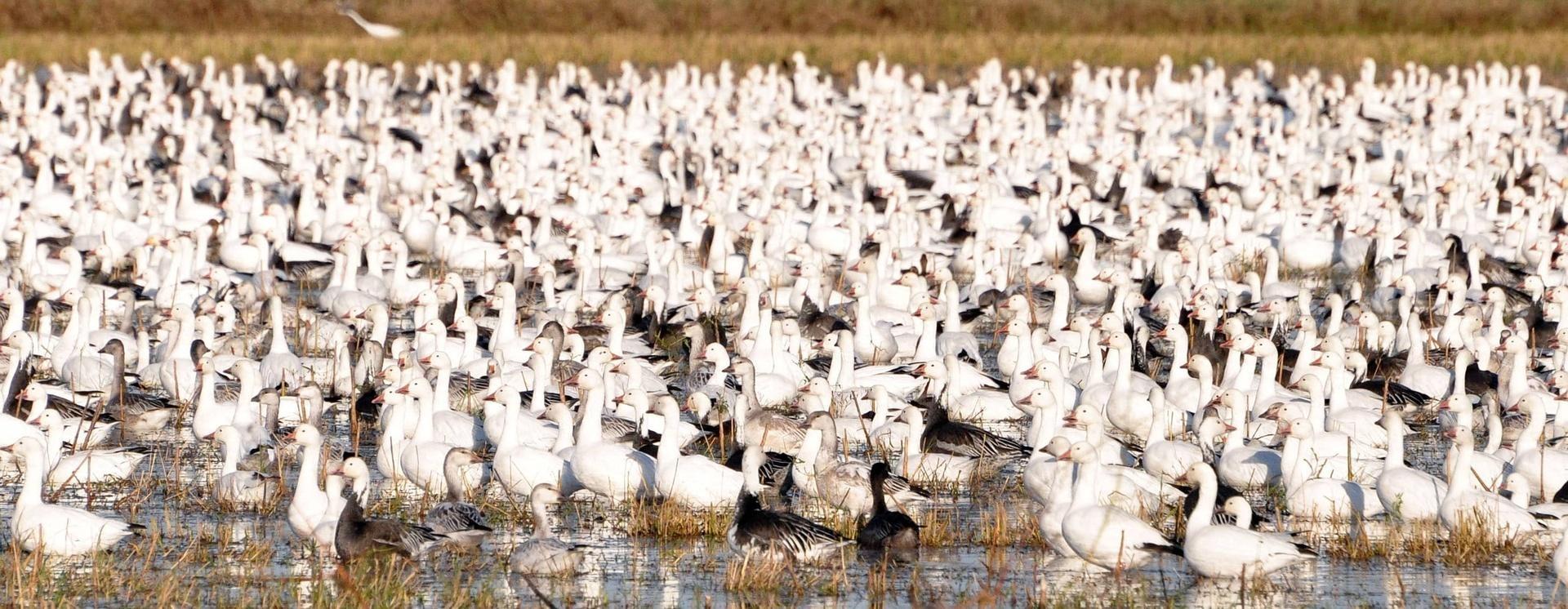North Carolina's Coast is a Rest Stop for Migrating Waterfowl and a Pandemic Respite for People


Looking for something to ease your mind in the midst of the pandemic? Need a little solace from all of the stress? Tired of being inside and wanting a break?
Visit one of the eleven National Wildlife Refuges on North Carolina’s coastal plain for a honking, quacking, chirping, tweeting break from pandemic life. Although refuge offices and visitor centers may be closed due to Covid-19, most outdoor areas at Alligator River, Cedar Island, Currituck, Mattamuskeet, Mackay Island, Pea Island, Pocosin Lakes, Roanoke River, and Swanquarter are open to the public during daylight hours.
Each year roughly 100,000 migrating birds spend part of the winter on North Carolina's coast. The fish and wildlife populations are influenced by a number of factors: the refuges' location along the Atlantic Flyway for waterfowl, shorebirds, wading birds, and neotropical migratory songbirds; the brackish water surrounding the refuges; and the nature of the habitat on the refuges.
Reports from bird watchers say this year’s migration is as impressive as ever. Get a glimpse of the migration spectacle at Pocosin Lakes National Wildlife Refuge from a few years ago in this Sci NC story:
Upwards of 100,000 migratory waterfowl spend the winter in the National Wildlife Refuges along the North Carolina coast.
The three month visit is spectacular to watch, but it also gives scientists valuable insights into the health of the bird populations. Visit Pocosin Lake National Wildlife Refuge with us, and catch a glimpse of this seasonal phenomenon.